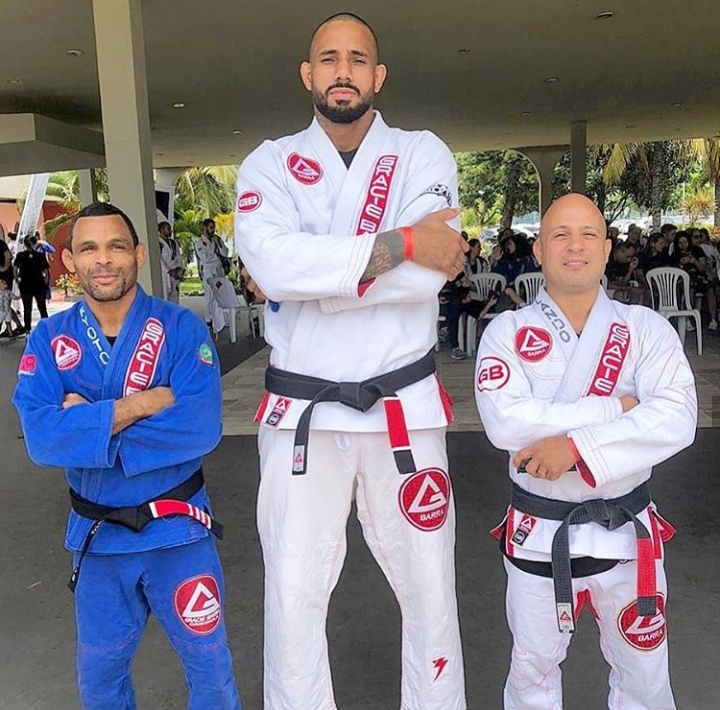GB Student Question: Advice for small students

A GB student writes in and asks “I’m one of the smallest students in the class. What can I do to not get smashed by bigger, heavier training partners?”
ㅤ
This is a great question! After all, isn’t this the reason why most jiu-jitsu students got started training at Gracie Barra? To learn how to defend against a bigger, stronger attacker? I doubt many have ever joined a martial arts class saying to themselves “I really want to learn how to defeat smaller weaker opponents!”
ㅤ
Have you checked out the GB Online Instagram account?
https://instagram.com/graciebarraonline @graciebarraonline
ㅤ
All kidding aside, jiu-Jitsu might be the best martial art that provides smaller, weaker people with the ability to defend against and defeat larger opponents. Two of the key figures in the early development of jiu-jitsu in Brazil – Grandmasters Carlos Gracie Sr. and Helio Gracie – were famous for their smaller stature and ability to defeat bigger opponents.
ㅤ
Closer to home, you very likely have a number of higher-ranked belts in your Gracie Barra school who are smaller, lighter (and dare I say not very physically intimidating?) who are also absolute savages on the mat. The majority of us have been tied up in knots by a more experienced student who is much smaller than ourselves. It can be a very humbling experience to be tapped repeatedly by a much smaller training partner. But the experience should make a believer out of you as well. You have experienced direct proof of the effectiveness of jiu-jitsu for a smaller student.
ㅤ
By observing these smaller “giant killers” in rolling, we can notice certain patterns in the techniques and positions that they prefer when rolling against training partners that outsize them.
ㅤ
Here are a few things that tend to work for smaller jiu-jitsu students in rolling with bigger training partners.
ㅤ
1- A great guard. A smaller student will likely be forced to develop a strong defensive guard out of sheer necessity. If they spend a majority of their rolls on the bottom they will be very proficient in guard retention, the ability to frame and keep distance to avoid carrying the weight and pressure of the heavyweights, and have a sneaky, dangerous straight armlock or omoplata from their guard.
ㅤ
When I think of the submissions that smaller jiu-jitsu players tend to be successful tapping bigger students with, it is most often the straight armbar from guard. And as a form of control and sweeping tool, the omoplata also allows the lighter BJJ fighter to utilize the strength of their legs and hips against the shoulder of the opponent.
ㅤ
2- The human backpack. Getting to the opponent’s back is also a common element in the game of the smaller BJJ fighter. By using their speed advantage, the smaller fighter can look for an arm drag or duck under to get around to the bigger opponent’s back where they can attack with the King of Submissions – the rear choke.
ㅤ
The Back Mount is considered the #1 position on the ground for a good reason. All of your opponent’s offensive options are rendered ineffective and they can’t see what you are doing on their back. The back control might be the safest place for a small jiu-jitsu fighter to be in a match.
ㅤ
3- The leg lock game. In David vs Goliath matches in MMA and sport grappling absolute matches, the great equalizer is the leg attacks. Leg entanglement guards enable the smaller fighter to control the movement of a heavier opponent while pitting the strength of their entire body against the comparably weaker joints of the ankle and knee.
ㅤ
Observe what lighter competitors go to in a competitive match against a much bigger adversary and I’ll bet you that you will see single leg X-guard and leg lock attacks! It’s because it works.
ㅤ
Smaller jiu-jitsu students don’t despair. There ARE strategies and techniques that will allow you to level the playing field and not only defend, but WIN against bigger training partners.
ㅤ
See also on GB Blog: Technique Beats Strength with Master Carlos Gracie Jr.
ㅤ
Writer: Mark Mullen, Gracie Barra Black Belt
